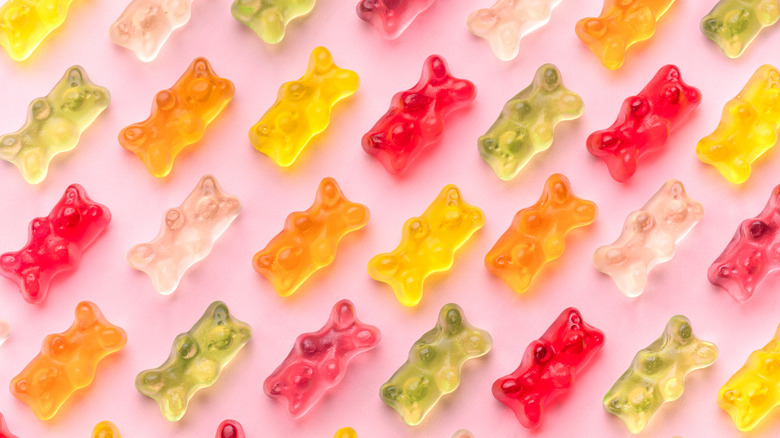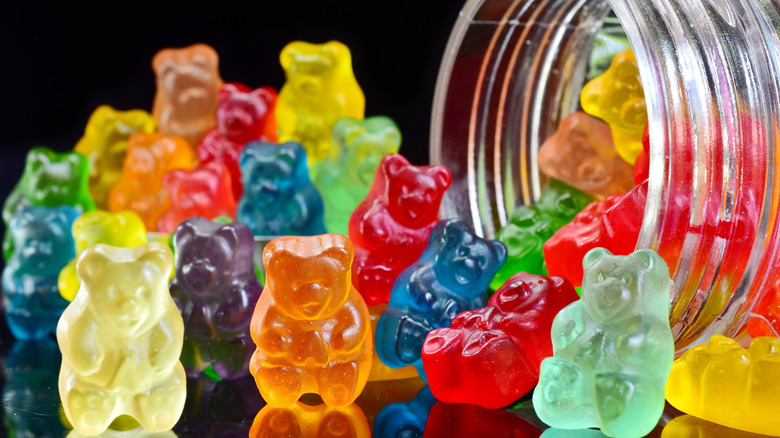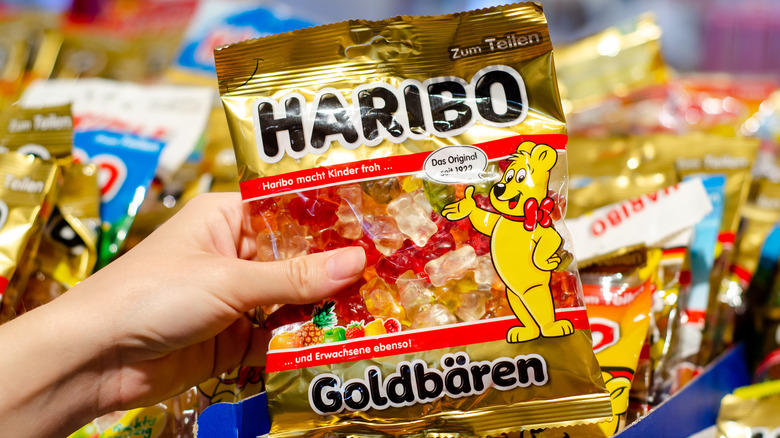Gummy Bear Candy Has A Troubling Past
Though it may not even occur to you while you're eating it, certain snack foods and beverages have dark backstories that may make them seem a little less sweet. Insider tells us that Fanta was founded in Nazi-era Germany, as trade restrictions forced Coca-Cola manufacturers in the nation to concoct a fruit soda that bore a faint resemblance to Coke. And Graham crackers were invented by a religious zealot who wanted to curb deviant desires using bland bread (via Independent).
More recently, Barnum's Animals, the critter-shaped cookies that might have been a prominent feature of your childhood, had to reckon with their shady history, and change their longstanding design in accordance with modern standards of animal captivity, per Smithsonian Magazine. Just a few years ago, they updated their packing, freeing the trademark zoo animals after more than a century of captivity. Another animal-inspired snack food, gummy bear candy, also has a problematic past.
The history of dancing bears
Mental Floss tells us that gummy bears were first created by Hans Riegel, a German candy maker. Two years after opening his own candy company in 1920, he decided to craft a gelatin-based bear, and his company, Haribo, has been a staple of the gummy candy industry ever since. However, the original name of this iconic treat has its roots in the sordid history of animal abuse.
When Riegel first created the Haribo gummy bear, the candy was called the Dancing Bear, per Smithsonian Magazine. Though the animal shape was meant to inspire joy in children, it is a reference to the very real practice of training wild bears to dance for our entertainment. According to Bear Conservation, dancing bears have been around for hundreds of years. It involves removing a bear from its habitat while it's still a cub and training the bear to dance using a number of painful, abusive practices. Today, the practice has been banned in many nations around the world. Dancing bears still exist in some places and Bear Conservation explains that it is particularly prevalent in modern-day Siberia.
Haribo and the GoldBear
According to Smithsonian Magazine, Haribo changed the name of the gummy bear candy to Goldbears in 1960, which could have possibly been a response to evolving cultural mores regarding the treatment of animals. Despite the candy's troubling past, its future looks bright. Haribo Goldbears have been around for over 100 years and, every day in over 100 countries, the company produces a whopping 160 million bears. Founder Hans Riegel ran the company until his death in 2013, per Forbes. He was 90 years old.
Despite having changed its signature candy's problematic name, Haribo hasn't been free of controversy in recent years. Smithsonian Magazine explains that Haribo, in the early 2000s, refused to participate in a program that was designed to provide reparations to those who were forced to provide free labor for the company in World War II-era Germany. However, Haribo's senior communications V.P. Christian Bahlman insists that an internal investigation revealed that the company did not employ forced labor. Additionally, a 2017 documentary revealed that the gelatin used in Haribo gummies was harvested by exploited workers who were subjected to horrific conditions.


